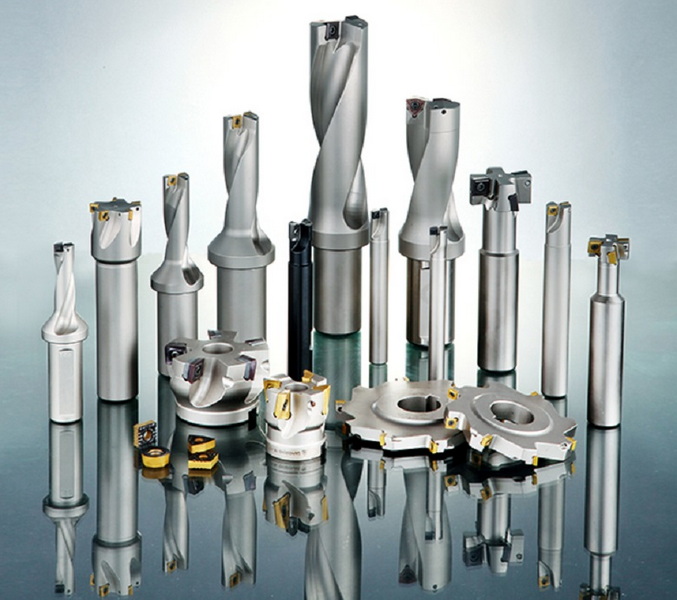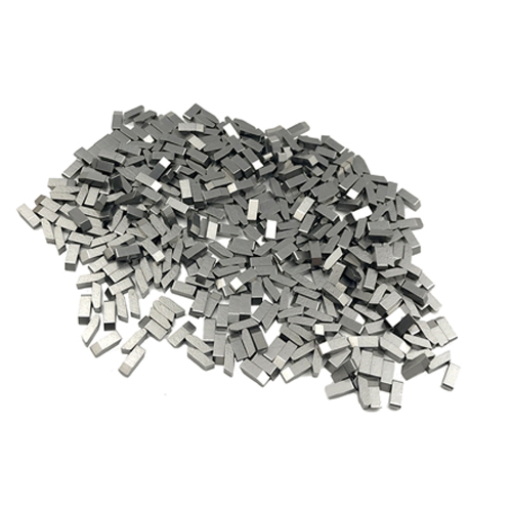Content Menu
● Introduction to Brazing
>> Brazing Process Overview
● Choosing the Right Brazing Alloy
>> Copper-Based Brazing Alloys
>> Silver-Based Brazing Alloys
● Surface Preparation Techniques
>> Cleaning Methods
● Heating Techniques
>> Torch Brazing
>> Induction Heating
>> Furnace Brazing
● Challenges and Considerations
● Advanced Techniques for Enhanced Bonding
>> Vacuum Brazing
>> Inert Gas Brazing
>> Ultrasonic Cleaning
● Case Studies and Applications
● Quality Control and Testing
>> Radiography
>> Ultrasonic Testing
>> Mechanical Testing
● Future Developments and Trends
>> New Brazing Alloys
>> Automation in Brazing
● Conclusion
● Frequently Asked Questions
>> 1. What are the common brazing alloys used for tungsten carbide to copper joints?
>> 2. How do I prepare the surface of tungsten carbide for brazing?
>> 3. What heating techniques are suitable for brazing tungsten carbide to copper?
>> 4. What are the challenges associated with brazing tungsten carbide to copper?
>> 5. How can I minimize thermal stresses during the cooling process?
● Citations:
Brazing tungsten carbide to copper is a complex process that requires careful consideration of several factors, including the choice of brazing alloy, surface preparation, and heating techniques. Tungsten carbide is widely used in cutting tools and wear parts due to its exceptional hardness and wear resistance, while copper is valued for its high thermal conductivity and electrical properties. Combining these materials can enhance the performance of various industrial components.

Introduction to Brazing
Brazing is a high-temperature joining process that involves melting a filler metal to form a strong bond between two base metals. Unlike welding, brazing does not melt the base metals themselves, which helps preserve their properties. The filler metal typically has a lower melting point than the base metals, allowing it to flow into the gap between them and solidify, forming a strong joint.
Brazing Process Overview
1. Surface Preparation: Clean the surfaces of both the tungsten carbide and copper to ensure they are free from contaminants. This step is crucial for achieving a strong bond.
2. Application of Flux: Apply a suitable flux to protect the surfaces from oxidation during heating and to improve the flow of the brazing alloy.
3. Placement of Brazing Alloy: Position the brazing alloy, often in the form of a shim or wire, between the prepared surfaces.
4. Heating: Use a suitable heating method (e.g., torch, induction, or furnace) to melt the brazing alloy.
5. Cooling: Allow the assembly to cool slowly to prevent thermal stresses.
Choosing the Right Brazing Alloy
When brazing tungsten carbide to copper, the choice of brazing alloy is critical. Copper-based alloys are commonly used due to their good wetting properties on both tungsten carbide and copper. These alloys often contain additional elements like manganese, nickel, or cobalt to enhance bonding strength and wetting characteristics.
Copper-Based Brazing Alloys
- Meta-Braze™ Cu 058: This alloy contains manganese and cobalt, providing strong bonds with tungsten carbide and is suitable for mining tools and wear parts.
- Meta-Braze™ Cu 052: A tough copper-nickel-manganese alloy used for tools subject to high percussive impact loads.
- Meta-Braze™ Cu 067: A specialized alloy used in the manufacture of drill bits for mining and construction tools.
Silver-Based Brazing Alloys
While copper-based alloys are cost-effective, silver-based alloys offer superior strength and lower brazing temperatures, which can reduce thermal stresses in the tungsten carbide. However, they are more expensive and may not be necessary for all applications.
Surface Preparation Techniques
Proper surface preparation is essential for achieving a strong bond. Both the tungsten carbide and copper surfaces should be cleaned thoroughly to remove any contaminants.
Cleaning Methods
- Solvent Cleaning: Use solvents to remove oils and greases from the surfaces.
- Mechanical Cleaning: Sandblasting or grinding can be used to create a rough surface for better adhesion.
- Electroplating: Applying a thin layer of metal can enhance the bonding process.
Heating Techniques
The heating method used can significantly affect the quality of the braze joint. Common techniques include torch brazing, induction heating, and furnace brazing.
Torch Brazing
Torch brazing is versatile and can be used for small-scale operations. However, it requires skill to maintain uniform heating.
Induction Heating
Induction heating offers rapid and efficient heating but can be non-uniform, especially with complex geometries. It is crucial to design the induction coil carefully to ensure even heating.
Furnace Brazing
Furnace brazing provides uniform heating and is ideal for large-scale production. It can be performed in a vacuum to prevent oxidation and improve the quality of the joint.
Challenges and Considerations
Brazing tungsten carbide to copper presents several challenges:
- Thermal Expansion: Tungsten carbide has a lower thermal expansion coefficient than copper, which can lead to residual stresses during cooling. Slow cooling is recommended to minimize these stresses.
- Wetting: Ensuring good wetting of the brazing alloy on both materials is crucial for a strong bond.
- Cobalt Depletion: High temperatures can cause cobalt depletion in tungsten carbide, weakening the material.
Advanced Techniques for Enhanced Bonding
Vacuum Brazing
Vacuum brazing is a technique that involves heating the assembly in a vacuum environment. This method eliminates oxidation and can improve the quality of the joint by ensuring a clean environment.
Inert Gas Brazing
Similar to vacuum brazing, inert gas brazing uses a controlled atmosphere to prevent oxidation. This method is particularly useful when vacuum equipment is not available.
Ultrasonic Cleaning
Using ultrasonic cleaning before brazing can help remove microscopic contaminants, further enhancing the bonding process.
Case Studies and Applications
Brazing tungsten carbide to copper is used in various industries:
- Mining Tools: Drill bits and cutting tools benefit from the wear resistance of tungsten carbide combined with the thermal conductivity of copper.
- Aerospace: Components requiring high thermal conductivity and wear resistance, such as rocket nozzles, can benefit from this joining technique.
- Automotive: Engine components and wear parts can be enhanced with tungsten carbide-copper joints.

Quality Control and Testing
After brazing, it is essential to inspect the joint for quality and integrity. Techniques such as radiography, ultrasonic testing, and mechanical testing can be used to evaluate the bond strength and detect any defects.
Radiography
Radiography involves using X-rays to inspect the internal structure of the joint. This method can reveal defects like porosity or lack of penetration.
Ultrasonic Testing
Ultrasonic testing uses high-frequency sound waves to detect defects within the joint. It is particularly useful for detecting cracks or voids.
Mechanical Testing
Mechanical testing involves applying stress to the joint to evaluate its strength. Tensile testing and shear testing are common methods used to assess the bond strength.
Future Developments and Trends
As technology advances, new brazing alloys and techniques are being developed to improve the efficiency and quality of tungsten carbide to copper joints. Advances in automation and robotics are also expected to enhance the precision and consistency of the brazing process.
New Brazing Alloys
Researchers are exploring new alloy compositions that offer improved wetting properties and higher strength at lower temperatures. These advancements could expand the range of applications for tungsten carbide-copper joints.
Automation in Brazing
Automated brazing systems can improve the consistency of the brazing process by controlling heating rates and cooling times more precisely. This can lead to higher quality joints and reduced production costs.
Conclusion
Brazing tungsten carbide to copper requires careful selection of brazing alloys, precise surface preparation, and appropriate heating techniques. Understanding the challenges associated with thermal expansion and wetting is crucial for achieving a strong and durable joint. By following these guidelines and considering the specific requirements of each application, manufacturers can produce high-quality components that combine the benefits of both materials.

Frequently Asked Questions
1. What are the common brazing alloys used for tungsten carbide to copper joints?
Common brazing alloys include copper-based alloys like Meta-Braze™ Cu 058 and silver-based alloys for higher strength applications.
2. How do I prepare the surface of tungsten carbide for brazing?
Surface preparation involves cleaning with solvents, mechanical methods like sandblasting, and possibly electroplating to enhance bonding.
3. What heating techniques are suitable for brazing tungsten carbide to copper?
Suitable heating techniques include torch brazing for small operations, induction heating for efficiency, and furnace brazing for uniformity and large-scale production.
4. What are the challenges associated with brazing tungsten carbide to copper?
Challenges include managing thermal expansion differences, ensuring good wetting of the brazing alloy, and preventing cobalt depletion in tungsten carbide.
5. How can I minimize thermal stresses during the cooling process?
Minimize thermal stresses by cooling the assembly slowly and uniformly, avoiding rapid cooling methods like quenching.
Citations:
[1] https://www.radyne.com/carbide_brazing/
[2] https://www.brazing.com/products/copperBrazingAlloys.aspx
[3] https://mat-tech.com/brazing-of-cemented-tungsten-carbide-to-din-1-2343-tool-steel/
[4] https://carbideprocessors.com/pages/brazing-carbide/brazing-process.html
[5] https://www.shutterstock.com/search/carbide-brazing
[6] https://www.empireabrasives.com/blog/copper-brazing-vs-silver-welding-which-makes-the-best-carbide-burr/
[7] https://blossompump.en.made-in-china.com/product/NJPrvxFOZGYs/China-Alloy-Core-Carbide-Composite-Electrode-Tungsten-Carbide-Copper-Brazing-Mace-No-1.html
[8] https://www.vacfurnace.com/vacuum-furnace-news/tungsten-carbide-brazing/
[9] https://www.meta-braze.com/products/base-metal-brazing-alloys/copper-brazing-alloys-for-tungsten-carbide
[10] https://www.jmmetaljoining.com/pdfs-downloads/3756%20Tungsten%20Carbide%20Booklet%20Web%20Version.pdf
















